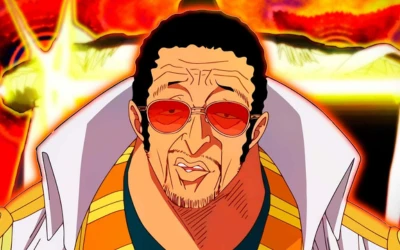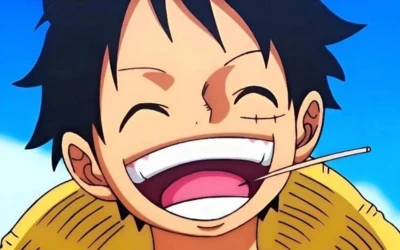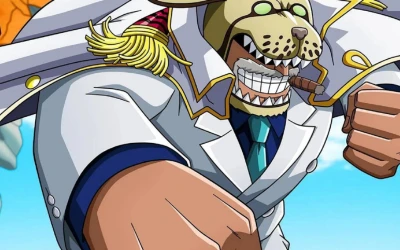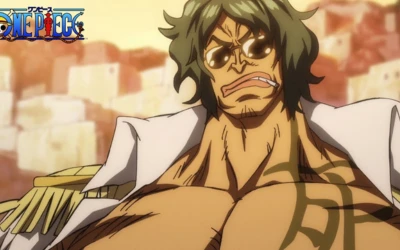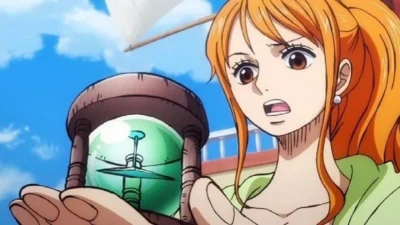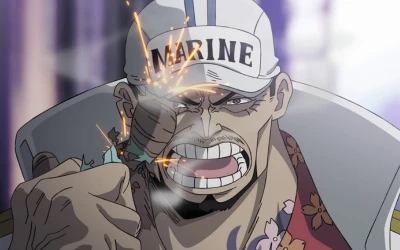In the One Piece universe, “Sengoku” refers to Sengoku the Buddha, a prominent character who serves as one of the highest-ranking members of the Marines. He holds the title of Fleet Admiral, making him one of the most powerful figures within the World Government’s military structure. Sengoku is widely respected for his strategic brilliance, formidable combat abilities, and unwavering commitment to justice. Despite his imposing appearance and reputation, he often displays a calm and composed demeanor, earning him the nickname “Buddha.” Sengoku plays a significant role in shaping the events of the One Piece world, particularly in the Marines’ ongoing conflict with the notorious pirate, Monkey D. Luffy, and his crew.

Introduction
a. Sengoku the Buddha is a former Fleet Admiral of the Marines, succeeding Kong and preceding Sakazuki
Sengoku, also known as “Sengoku the Buddha,” rose through the ranks of the Marine Corps, eventually becoming Fleet Admiral. This title placed him at the pinnacle of Marine authority, overseeing all aspects of the organization’s operations. Sengoku’s tenure, which followed the renowned leader Kong and preceded the formidable Sakazuki, marked a watershed moment in Marine history.
Sengoku wielded unparalleled power and authority as Fleet Admiral, commanding all Marines to respect and obey him. His strategic astuteness and unwavering dedication to justice cemented his reputation as a formidable leader in the world of One Piece. Under his leadership, the Marines carried out their mission of maintaining order and upholding the principles of justice across the seas.
Sengoku’s leadership style as Fleet Admiral was characterized by a mix of common sense and moral conviction. While he prioritized enforcing Marine justice and combating piracy, he also recognized the importance of maintaining global balance and stability. His decisions were informed not only by the letter of the law, but also by a greater understanding of the world’s complexities and the consequences of his actions.
Throughout his reign, Sengoku faced numerous challenges and adversaries, navigating the perilous waters of political interest and naval conflict with unwavering determination. His leadership style, which combined wisdom, strength, and compassion, had an indelible impact on the Marines and earned him the respect of both allies and adversaries.
Despite his impressive reputation and unwavering commitment to justice, Sengoku’s tenure as Fleet Admiral was not without controversy and setbacks. The Summit War of Marineford, in particular, would put his leadership and principles to the test in ways he had not anticipated, eventually leading to his decision to resign from his position of authority.
Nonetheless, Sengoku’s legacy as Fleet Admiral lives on, as proof of his unwavering commitment to justice and tireless efforts to uphold Marine ideals in a world fraught with chaos and uncertainty.
b. He retired from his leadership position after the Summit War of Marineford but remained in the Marines as an Inspector General
Following the harrowing events of the Summit War of Marineford, Sengoku made the difficult decision to step down from his prestigious position as Fleet Admiral. The war, which saw the Marine headquarters surrounded by pirates and revolutionaries led by the fearsome Whitebeard, shook the world to its core and tested the resolve of everyone involved.
Sengoku’s decision to retire was not made lightly. The revelation of dark secrets and hidden agendas within the highest level of power made him lose faith in the system he had sworn to uphold.
Despite leaving his leadership position, Sengoku’s commitment to justice remained unwavering. Recognizing the importance of maintaining order and stability within the Marines, he chose to stay with the organization in a different capacity: as Inspector General. Sengoku continued to serve the Marines in this capacity, although in a less prominent role, ensuring that justice was upheld and the organization remained true to its principles.
As Inspector General, Sengoku was in charge of overseeing internal affairs within the Marine Corps, rooting out corruption and malfeasance wherever it was discovered. His keen insight and unwavering commitment to justice established him as a formidable force within the organization, earning him the respect and admiration of both colleagues and subordinates.
Despite his retirement from active leadership, Sengoku’s influence within the Marines remained strong. His wisdom and experience served as a guiding light for the next generation of Marine officers, instilling in them the values of duty, honor, and integrity that he had upheld throughout his distinguished military career.
Though Sengoku was no longer in command of the Marines, his legacy lived on, serving as a reminder of the enduring power of justice and the unwavering dedication of those who fought to preserve it, even in the face of overwhelming adversity.
Background and Relationships
a. Major figure during Gol D. Roger’s era
Sengoku the Buddha emerged as a prominent figure during the unstable reign of Gol D. Roger, the Pirate King. His presence loomed large among the Marines, where he made a name for himself through his unwavering commitment to justice and formidable strength. During this period, marked by the rise of piracy and the search for the fabled One Piece, Sengoku’s leadership was critical in maintaining order and combating the growing threat of piracy.
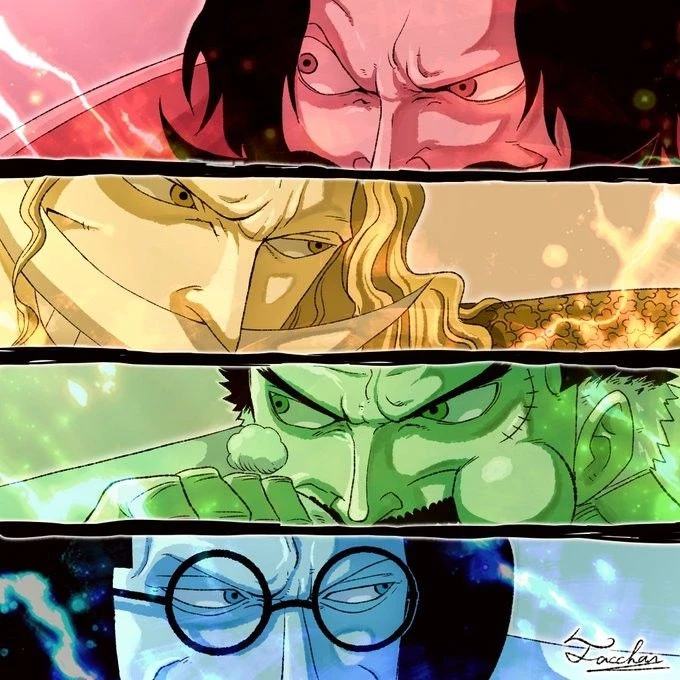
As a major figure, Sengoku’s actions echoed across the seas, earning him both respect and fear from pirates and allies. His strategic prowess and commitment to upholding justice made him a formidable opponent to those who dared to question the World Government’s authority. Sengoku’s influence extended beyond the battlefield, as he navigated the complex political landscape with an acute awareness of the delicate balance between power and diplomacy.
Throughout this period, Sengoku’s unwavering commitment to justice stood out, serving as a beacon of hope for those seeking to maintain order in a chaotic world. His legacy during Gol D. Roger’s tenure would shape the Marine Corps’ future and leave an indelible mark on world history.
b. Raised Donquixote Rosinante and X Drake like his own sons
As a testament to his character, Sengoku the Buddha served as mentor and guardian to two people who would eventually shape their own destinies: Donquixote Rosinante and X Drake. Despite the demands of his position in the Marine Corps, Sengoku found the time and dedication to nurture these young men, treating them as if they were his own son.
Donquixote Rosinante, in particular, found support and guidance under Sengoku’s supervision. Rosinante’s future appeared dark as a member of the infamous Donquixote Pirates. However, under Sengoku’s influence, he discovered rescue and purpose in the ranks of the Marines. Sengoku’s belief in Rosinante’s potential fueled his transformation from a pirate to a Marine officer committed to justice.
Similarly, Sengoku provided paternal care to X Drake, a former pirate who sought refuge with the Marines. Despite Drake’s unstable past, Sengoku saw his potential for good and provided him with the support and guidance he needed to navigate his new life as a Marine. Drake succeeded under Sengoku’s watchful eye, eventually rising through the ranks to become a valued member of the organization.
Sengoku’s role as a mentor to Rosinante and Drake demonstrates his capacity for compassion and understanding, which transcends the boundaries of duty and hierarchy within the Marines. His influence would leave an indelible mark on both men, transforming them into formidable allies in the ongoing struggle for global justice and order.
c. Lifetime colleague of Monkey D. Garp; respects Garp but was frustrated by his actions regarding Luffy
Throughout his illustrious career in the Marine Corps, Sengoku the Buddha formed a deep and lasting bond with his lifelong colleague, Monkey D. Garp. As fellow Marines, their paths crossed in countless battles and conflicts, forging a bond based on mutual respect and admiration.
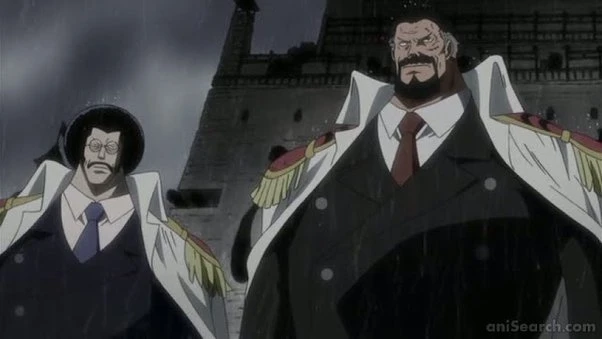
Sengoku held Garp in high regard, recognizing his extraordinary strength and unwavering commitment to justice. Their shared battlefield experiences fostered a strong sense of camaraderie as they fought together to uphold World Government principles and protect innocent lives from the scourge of piracy.
Despite their close relationship, Sengoku’s admiration for Garp was tempered by a sense of frustration and disappointment, particularly with Garp’s actions towards his grandson, Monkey D Luffy. As a Marine, Garp was obligated to uphold the law and apprehend pirates, regardless of personal ties. However, his unwillingness to apprehend Luffy, despite knowing his status as a notorious pirate, clashed with Sengoku’s unwavering commitment to justice.
The conflict between duty and personal loyalty highlighted the complexities of their relationship, as both men struggled with the inherent contradictions of their roles in the Marines. Despite their differences, Sengoku’s admiration for Garp remained unwavering, a testament to the long-lasting bonds formed in the heat of battle and shared experiences.
d. Acquainted with Vice Admiral Tsuru; annoyed by her remarks about his cheerful temperament
Sengoku the Buddha met Vice Admiral Tsuru in the corridors of Marine Headquarters, a seasoned and respected officer within the organization. While their interactions were professional, there was a subtle tension between the two, caused by Tsuru’s tendency to comment on Sengoku’s cheerful demeanor.

Tsuru, known for her no-nonsense demeanor and sharp wit, frequently made lighthearted remarks about Sengoku’s apparent jolly nature, much to his annoyance. Despite his outward appearance of calm and composure, Sengoku was irritated by Tsuru’s constant jabs, which he saw as a slight on his reputation as a stern and authoritative figure within the Marine Corps.
However, beneath the surface, their dynamic revealed a mutual respect for one another’s abilities and commitment to their common cause. Despite their occasional clashes, Sengoku and Tsuru recognized the value of cooperation and solidarity within the Marine ranks, putting aside their differences in service of a greater goal.
While their relationship had its ups and downs, it was ultimately defined by a shared commitment to maintaining justice and order in a unstable and uncertain world.
e. Shows respect for former Admiral Kuzan and newly promoted Admiral Issho
Within the Marines, Sengoku the Buddha held high regard for his former colleague, Admiral Kuzan, and the newly promoted Admiral Issho.
Admiral Kuzan, also known as Aokiji, earned Sengoku’s respect for his exceptional skill and unwavering commitment to justice during their time together. Despite philosophical differences and occasional disagreements, Sengoku admired Kuzan’s contributions to the Marine cause and the greater good of the world.
Similarly, Sengoku paid tribute to the newly promoted Admiral Issho, also known as Fujitora, whose unconventional methods and dedication to reforming the Marine Corps left an indelible impression on him. Despite their differing approaches, Sengoku recognized Issho’s honesty and vision for a more just and equitable world, and welcomed his new perspective on Marine affairs.
Sengoku found related spirits in both Kuzan and Issho, who shared his unwavering commitment to justice and peacekeeping. Their shared ideals served as a unifying force within the Marine Corps, instilling a sense of camaraderie and mutual respect among the highest levels of command.
f. Casual with his successor, Sakazuki
Sengoku the Buddha handed over the mantle of leadership to his successor, Sakazuki, also known as Akainu, after stepping down as Fleet Admiral. Despite the formalities of their positions, Sengoku and Sakazuki maintained a casual and amicable relationship, demonstrating a sense of camaraderie that transcended the Marine hierarchy.

Their interactions were marked by mutual understanding and respect, which arise from years of working together within the organization. Sengoku recognized Sakazuki’s formidable strength and unwavering dedication to justice, which earned him the prestigious title of Fleet Admiral.
Despite their differing perspectives on certain issues, Sengoku and Sakazuki shared a common goal: the preservation of order and the protection of innocent lives. Their shared sense of duty fostered a sense of unity among the Marines, as they collaborated to address the numerous challenges confronting their organization and the world at large.
Sengoku saw Sakazuki as a worthy successor who could guide the Marines into a new era of stability and prosperity. Their casual affinity exemplified the bonds formed in the heat of battle, transcending the formalities of their respective positions within the Marine hierarchy.
Appearance and Personality
a. Tall, fair-skinned, muscular with a long, braided goatee and a mustache
Sengoku the Buddha cuts an imposing figure, standing tall and commanding. His stature reflects his years of experience and strength, honed through rigorous training and combat. He embodies the physical prowess expected of a former Marine Fleet Admiral, with fair skin and muscular build.
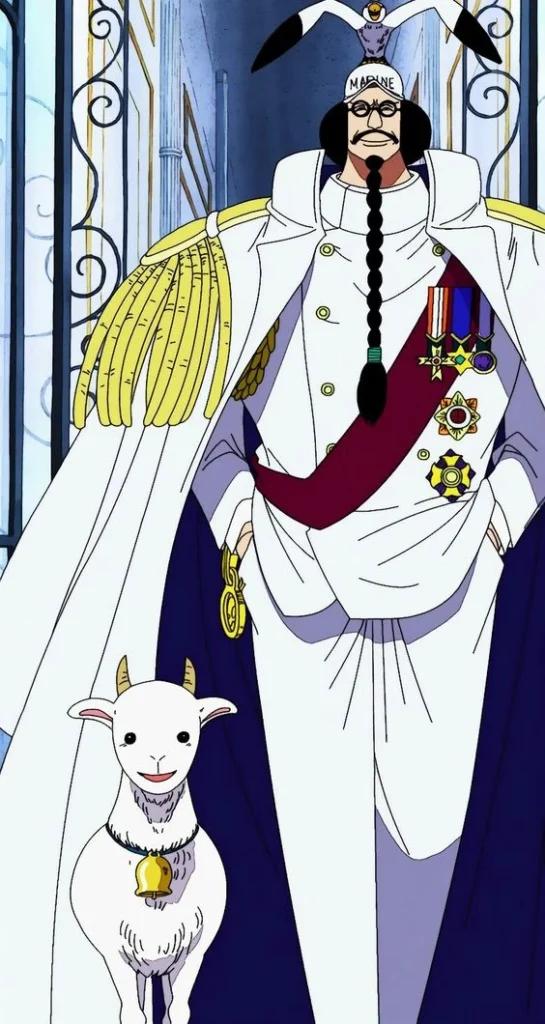
His distinctive facial hair, which includes a long, braided goatee and a mustache, contributes to his authoritative appearance. This facial hairstyle, combined with his stern expression, adds to his intimidating demeanor, establishing him as a figure not to be underestimated.
Sengoku’s physical appearance reflects his role in the Marines, representing strength, discipline, and authority. It commands respect from both allies and adversaries, cementing his reputation as one of the most formidable figures in the One Piece universe.
b. Wears glasses and a Marine admiral uniform adorned with medals
Sengoku’s attire emphasizes his position of authority within the Marines. He is frequently seen wearing a distinguished Marine admiral uniform, which is carefully tailored and adorned with various medals and badge. These decorations honor his numerous accomplishments and years of dedicated service to the World Government and the Marine Corps.
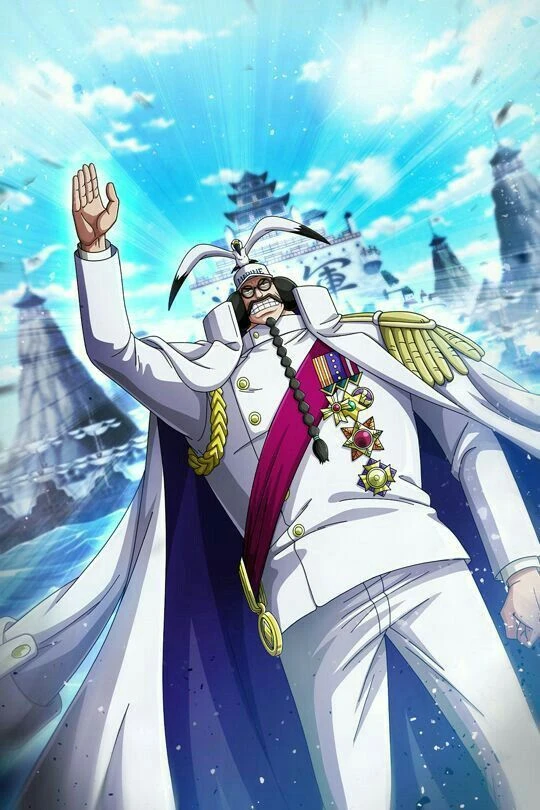
Sengoku is also known for wearing glasses, which add a scholarly yet commanding quality to his appearance. His glasses reflect his sharp intellect and strategic acumen, implying a deliberate and analytical approach to his duties as a senior Marine officer.
His uniform, medals, and glasses present a polished and professional image, which is appropriate for a former Fleet Admiral. It represents his commitment to upholding justice and maintaining order in the world of One Piece.
c. Usually seen with his pet goat
Sengoku’s persona is distinguished by his companionship with a pet goat, which accompanies him on numerous occasions. This unusual pet choice adds an unexpected charm to his character, making him appear more human to those around him.
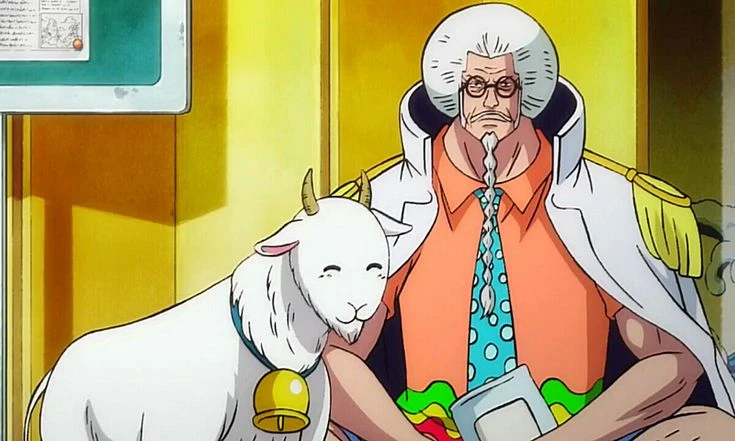
The presence of the goat frequently serves as a subtle reminder of Sengoku’s multifaceted personality; while he exudes authority and power as a Marine leader, his fondness for a simple creature like a goat suggests a softer, more nurturing side. It humanizes him by demonstrating that, despite the chaos of the world, he finds solace and companionship in the company of animals.
Furthermore, the goat’s presence can represent Sengoku’s connection to nature and the simpler things in life, which contrasts with the complexities and conflicts inherent in his role as a Marine commander.
Overall, Sengoku’s relationship with his pet goat adds depth to his character, revealing a layer of warmth and compassion beneath his tough exterior.
d. Displays calmness but can show anger and violence
Sengoku’s demeanor is typically calm and composed, reflecting his years of experience and leadership in the Marines. Even in the face of adversity or conflict, he maintains a calm and composed demeanor, rarely allowing his emotions to cloud his judgment.

However, beneath this outward calmness lie a formidable strength and the potential for intense anger and violence when provoked. As a former Fleet Admiral, Sengoku wields enormous power and authority, which he is not afraid to use when necessary to uphold justice and maintain order.
When pushed to his limits or confronted with acts of injustice, Sengoku can demonstrate a fierce and unwavering resolve, unleashing his considerable strength and combat skills to quell threats to global peace and stability. His ability to shift from a calm demeanor to a force to be reckoned with demonstrates the depth of his character and the gravity of his role as a Marine leader.
Sengoku’s ability to strike a balance between calm demeanor and readiness for action demonstrates his adaptability and effectiveness as a leader in the volatile world of One Piece.
e. Emphasizes “Reigning Justice” and prioritizes upholding justice
Sengoku is a firm believer in the principles of justice and order, embodying the Marine motto “Reigning Justice.” Throughout his career, he has been unwavering in his dedication to upholding the law and protecting innocent lives from threats both within and outside the World Government.

Sengoku believes that justice is more than a concept; it is a guiding principle that informs every decision and action he takes as a Marine leader. He holds himself and those under his command to the highest standards of integrity and morality, ensuring that justice is administered impartially and without bias.
Sengoku’s unwavering commitment to justice often puts him at odds with those who seek to undermine or corrupt the system for personal gain. He is willing to make difficult decisions and sacrifices in order to do what he believes is right, even if it means facing criticism or opposition from others.
As a former Fleet Admiral, Sengoku’s commitment to justice serves as a source of hope and inspiration for both his fellow Marines and the rest of the world. His leadership embodies the Marine Corps’ mission to create a world in which justice reigns supreme and evil is held accountable.
f. Displays both absolute and moral justice
Sengoku’s approach to justice includes both absolute and moral dimensions, reflecting the complexities of his personality and the challenges he faces as a Marine commander.
Absolute justice, as defined by the Marines, emphasizes strict adherence to laws and regulations, regardless of individual circumstances or morality. It takes a rigid and uncompromising approach to justice, focusing solely on maintaining order and punishing those who break the law.
However, in addition to adhering to absolute justice, Sengoku recognizes the importance of moral justice – doing what is right and just, even if it means deviating from strict legal explanation. He recognizes that the letter of the law may sometimes conflict with its spirit, and he is not afraid to use discretion and compassion in the pursuit of a greater good.
Sengoku’s ability to strike a balance between these two aspects of justice demonstrates his depth of character and understanding of the nuances involved in seeking justice. While he continuously defends the law, he is also capable of recognizing the inherent flaws in a system that may prioritize rules over human lives and dignity.
Sengoku aims to create a world where fairness, compassion, and integrity reign supreme, even in the face of adversity, by embracing both absolute and moral justice.
g. Appears kind and compassionate despite his stern Marine duties
Despite his formidable reputation as a Marine commander, Sengoku has a surprising level of kindness and compassion that frequently contradict with his stern demeanor. While he is unwavering in his dedication to upholding justice and maintaining order, he also shows genuine concern for the well-being of those under his command and the people he has sworn to protect.

Sengoku’s acts of kindness and compassion can take many forms, including encouraging his subordinates and providing aid and support to civilians caught in the crossfire of conflict. He understands the human cost of war and strives to minimize harm wherever possible, even as he performs his duties as a Marine commander.
Furthermore, Sengoku’s compassionate nature informs his leadership and decision-making style, going beyond simple acts of kindness. He considers the ethical implications of his actions and strives to make decisions that reflect both the letter and spirit of the law.
Despite the weight of his responsibilities, Sengoku maintains that kindness and compassion are essential qualities for a Marine leader. He recognizes that true justice requires empathy and understanding, and he strives to embody these values in all aspects of his life.
Sengoku’s ability to balance his strict Marine duties with genuine kindness and compassion distinguishes him as a true leader of integrity and honor in the world of One Piece.
Abilities and Powers
a. Former Fleet Admiral with absolute power over the Marines
Sengoku the Buddha is a formidable force in the world of One Piece, having previously held the prestigious title of Fleet Admiral, which granted him unparalleled authority over the Marines. As the most senior officer, he wielded absolute power, directing the course of Marine operations and policies. His decisions had enormous consequences, influencing the course of conflicts and shaping the world’s power dynamics.

Under Sengoku’s leadership, the Marines enforced justice and order across the seas. His strategic acumen and decisive leadership were critical at critical moments, such as the Summit War of Marineford. Despite the enormous pressures of his position, Sengoku remained loyal in his duty, striving to uphold the principles of justice and protect innocent lives from the threats of piracy and crime.
Sengoku’s tenure as Fleet Admiral marked a period of stability and authority in the Marine ranks. His presence commanded respect and instilled discipline in his subordinates, ensuring that the Marines remained a formidable force capable of confronting any challenge posed by the ever-changing landscape of the Great Age of Pirates.
b. Immense physical strength and hand-to-hand combat skills
Aside from his commanding position in the Marines, Sengoku the Buddha possesses formidable physical prowess and mastery of hand-to-hand combat. As a seasoned veteran of numerous battles, he has honed his body into a weapon capable of inflicting devastating blows on his opponents.

Sengoku’s physique is tall and imposing, reflecting years of rigorous training and combat experience. His muscular frame exudes strength and resilience, allowing him to withstand the rigors of combat and triumph over formidable opponents. Whether fighting pirate captains or engaging in martial arts duels, Sengoku’s physical prowess is undeniable, instilling fear in those who dare to oppose him.
Sengoku’s raw strength is matched only by his mastery of hand-to-hand combat techniques. With lightning-fast reflexes and precision strikes, he can outflank and outperform even the most skilled opponents in close-quarters combat. His fighting style combines martial arts mastery and strategic intelligence, allowing him to adapt to any situation and overcome seemingly overwhelming challenges.
Sengoku’s combat prowess demonstrates his dedication to justice and unwavering determination to defend the innocent. Whether leading his troops into battle or confronting threats head on, he remains a formidable adversary capable of turning the tide of any conflict through sheer strength and combat expertise.
c. Ate the Hito Hito no Mi, Model: Daibutsu, allowing transformation into a giant golden Buddha
Sengoku’s consumption of the Hito Hito no Mi, Model: Daibutsu, a Mythical Zoan-type Devil Fruit, provides him with one of his most unique and impressive abilities. This rare and powerful fruit allows him to transform into a massive golden Buddha, towering over his opponents with unrivaled size and strength.

When Sengoku activates his Devil Fruit powers, his body transforms into a towering figure resembling a divine deity. Dressed in gleaming gold, he exudes awe-inspiring majesty, striking fear into the hearts of those who see his massive figure.
Sengoku’s transformed state grants him access to abundance of devastating abilities befitting his status as a giant golden Buddha. His massive size gives him unparalleled physical strength, allowing him to tumble buildings and crush foes with a single powerful blow. His golden exterior serves as a formidable defense, making him immune to all but the most powerful attacks.
Furthermore, Sengoku’s transformation into a golden Buddha imbues him with divine authority, earning him the respect and admiration of both allies and adversaries. His presence on the battlefield is a symbol of unwavering justice and righteous rage, inspiring his comrades to fight with renewed zeal while instilling fear in his enemies.
Despite the immense power granted by his Devil Fruit, Sengoku uses it with caution and wisdom, understanding the responsibility that comes with such formidable abilities. He only uses it in the direst circumstances, ensuring that his transformation into a golden Buddha is a last resort in the face of overwhelming threats to the safety and security of innocent lives.
d. Capable of using all three types of Haki
In addition to his formidable physical abilities and transformation into a giant golden Buddha, Sengoku the Buddha is proficient in all three types of Haki, which enhances his combat prowess and strategic capabilities.
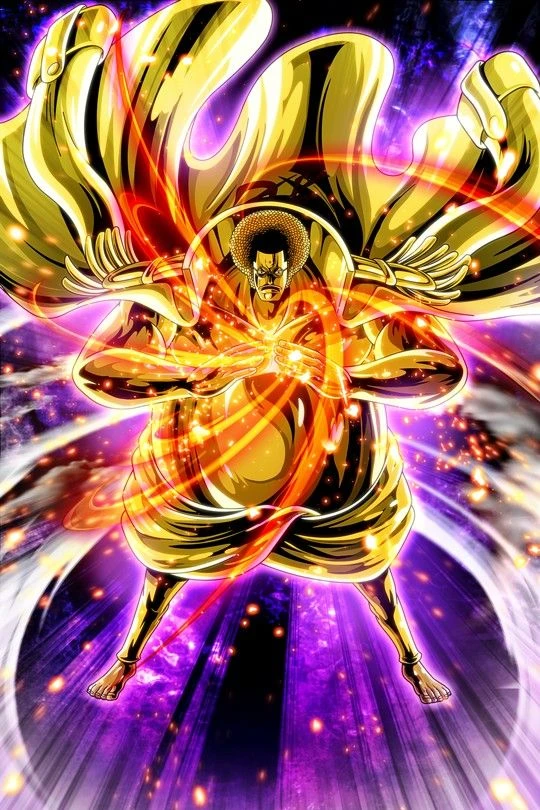
Observation Haki (Kenbunshoku Haki): Sengoku performs exceptionally well in Observation Haki, also known as Kenbunshoku Haki. This enhanced sensory ability enables him to detect the presence, intentions, and actions of others, even in the midst of chaotic battles. Sengoku’s keen perception allows him to anticipate his opponents’ movements, dodge attacks with pinpoint accuracy, and maintain a strategic advantage in combat. His mastery of Observation Haki allows him to remain vigilant against potential threats and respond quickly to changing circumstances, keeping him one step ahead of his opponents at all times.
Armament Haki (Busoshoku Haki): Sengoku’s mastery of Armament Haki, also known as Busoshoku Haki, enables him to imbue his attacks with invisible, armor-like energy, increasing their offensive power and allowing him to bypass even the strongest opponents’ defenses. Sengoku’s Armament Haki allows him to deliver devastating blows that can shatter steel and penetrate even the toughest defenses, making him a formidable force on the battlefield. Whether launching a barrage of powerful strikes or defending against enemy attacks, he uses the full extent of his Armament Haki to overwhelm his opponents and assert his dominance in combat.
Conqueror’s Haki (Haoshoku Haki): Sengoku possesses the rare ability known as Conqueror’s Haki, also known as Haoshoku Haki, which demonstrates his unwavering will and commanding presence. This extraordinary power enables him to project his overwhelming spirit and intimidate those around him, causing weaker-willed people to faint or lose consciousness in his presence. Sengoku’s mastery of Conqueror’s Haki reflects his status as a true leader and figure of authority in the One Piece universe, inspiring loyalty and respect from his allies while instilling fear in his enemies.
Sengoku the Buddha’s combat abilities are elevated to unprecedented heights by fully utilizing all three types of Haki, cementing his reputation as one of the world’s most formidable warriors. Whether commanding armies on the battlefield or engaging powerful adversaries in one-on-one combat, he demonstrates a mastery of Haki that solidifies his status as a legendary figure in history.
Significant Events
a. Played a major role in the Summit War of Marineford
Sengoku the Buddha’s participation in the Summit War of Marineford was a watershed moment in his career and the history of the Marines. Sengoku, the Fleet Admiral at the time, led the Marine forces in their efforts to execute Portgas D. Ace, Monkey D. Luffy’s adopted brother and the son of the late Pirate King, Gol D. Roger.

Throughout the war, Sengoku demonstrated strategic brilliance and a commanding presence. He oversaw the Marines’ defenses, deploying formidable assets such as Admirals Akainu, Aokiji, and Kizaru, as well as elite Marine units, to put down the uprising led by Whitebeard and his allies.
Furthermore, Sengoku demonstrated his resolve and commitment to justice, although with a heavy heart, by pursuing Ace’s execution according to the law. Despite the personal conflicts that arose from his relationship with Garp, Ace’s grandfather, Sengoku remained loyal in his duty to maintain order and uphold World Government principles.
Throughout the conflict, Sengoku’s leadership served as a stabilizing force amid the chaos of battle. His decisions and actions demonstrated his unwavering commitment to justice as well as his practical approach to dealing with the pirate crews’ threats.
However, the outcome of the war would have a long-term impact on Sengoku’s perspective and future decisions, leading to his dissatisfaction with the World Government and eventual resignation from his position as Fleet Admiral.
b. Frustrated by the World Government’s cover-up of incidents
Sengoku’s dissatisfaction with the World Government’s handling of specific incidents was a defining feature of his time as Fleet Admiral. Despite his unwavering commitment to justice and the Marine Corps’ mission of maintaining order, Sengoku frequently found himself at odds with the political schemes and secrecy of the government he served.

Sengoku’s disillusionment was exemplified by the government’s cover-up of various incidents, particularly those involving powerful individuals or organizations. Sengoku understood the value of transparency and accountability in maintaining public trust and ensuring the integrity of Marine actions.
However, he was repeatedly disappointed by the government’s tendency to prioritize its own interests over the truth, which led to a growing sense of frustration and discontent among Sengoku’s leaders. Whether it was suppressing information about notorious pirates’ activities or manipulating public perception to maintain control, Sengoku struggled to coordinate his principles with the realities of political convenience.
This frustration would eventually lead Sengoku to resign as Fleet Admiral, as he could no longer serve an institution that sacrificed its ideals for the sake of power and influence.
Despite his grievances, Sengoku remained committed to his belief in justice and advocated for reform within the Marine Corps even after he retired. His legacy serves as a reminder of the complexities that come with navigating the intersections of power, morality, and duty in the One Piece universe.
c. Resigned from the Marines due to loss of faith in the government
Sengoku’s resignation from the Marines marks a watershed moment in his career, reflecting his deep discontent with the World Government. After decades of dedicated service, rising through the ranks to become Fleet Admiral, Sengoku reached a breaking point where he could no longer coordinate his principles with the actions of the government he had sworn to serve.
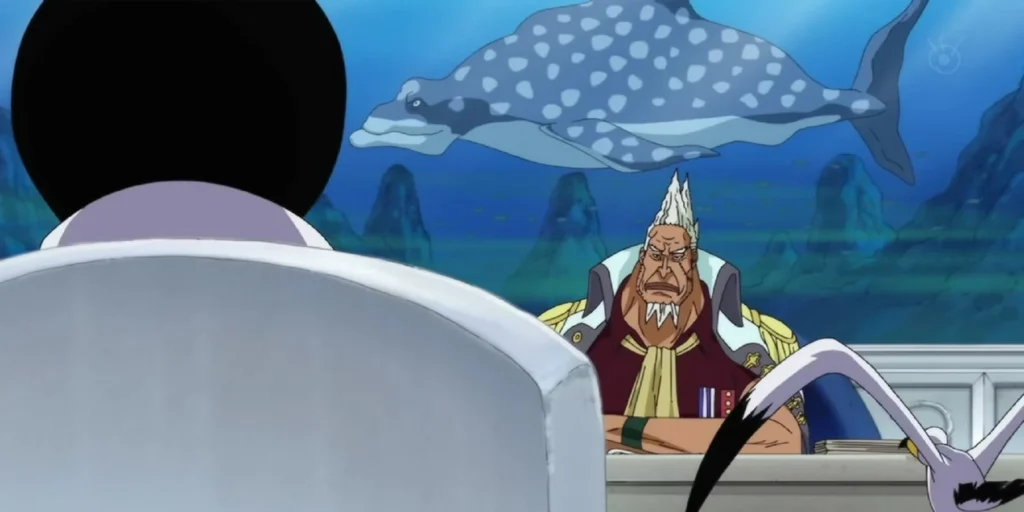
His decision to step down was motivated by a profound loss of faith in the institutions to which he had dedicated his life. Sengoku could no longer ignore the World Government’s systemic flaws and corruption, prompting a crisis of conscience and compelling him to take action.
Sengoku made a bold statement by resigning as Fleet Admiral, indicating that he would no longer tolerate the government’s injustices. His departure sent shockwaves through the Marine hierarchy, causing speculation and debate about the reasons for his abrupt decision.
Sengoku did not fade into insignificance following his resignation; rather, he continued to advocate for reform from the outside. He used his influence and experience to speak out against abuses of power and to promote transparency and accountability within the Marine Corps and the World Government.
Sengoku’s resignation demonstrates his unwavering commitment to justice and willingness to confront the uncomfortable truths at the heart of the One Piece universe. Despite the personal and professional risks, he chose to stand up for righteousness, inspiring others to question the status quo and work for a better world.
Enemies and Allies
a. Respected by Whitebeard and Shanks but harbors animosity towards Blackbeard and Monkey D. Luffy
Despite his unwavering commitment to justice and his position in the Marines, Sengoku the Buddha has earned the respect of some of the most powerful figures in the pirate world. Whitebeard, also known as Edward Newgate, a powerful pirate captain and one of the Four Emperors, had some respect for Sengoku. Sengoku’s unwavering commitment to justice, combined with his formidable strength as a former Fleet Admiral, most likely earned him this respect.
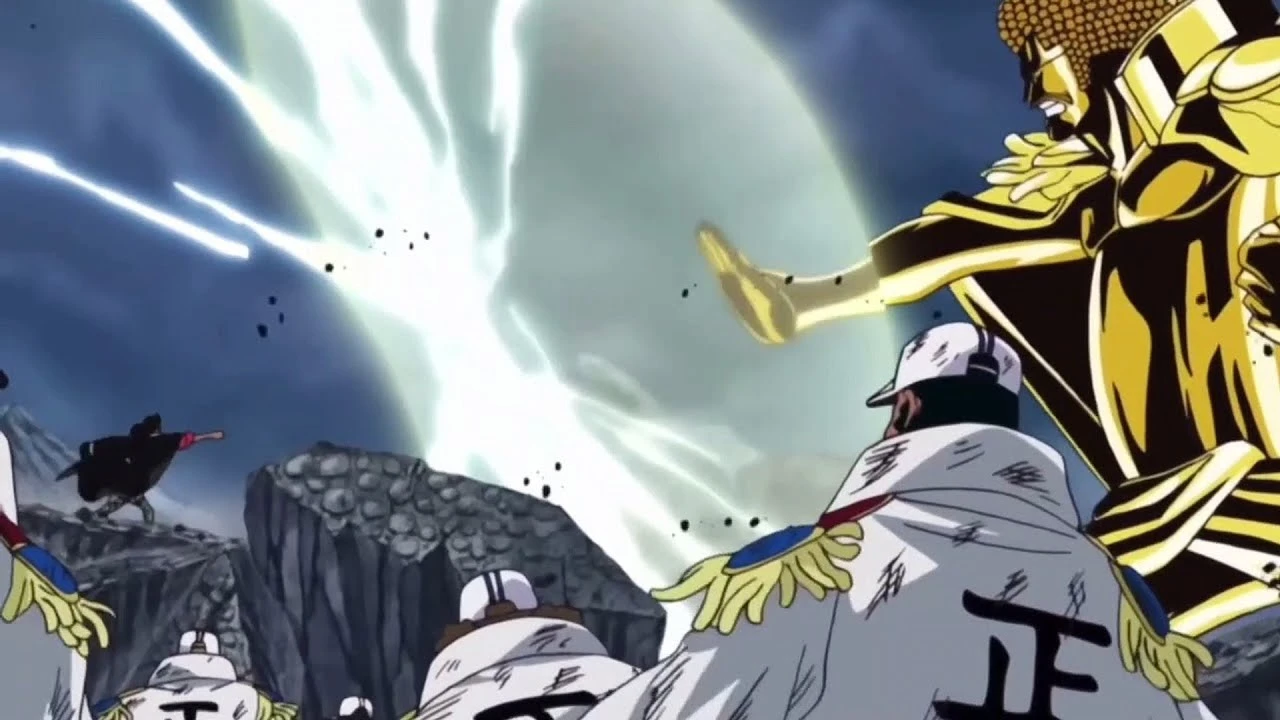
Similarly, the renowned pirate Shanks, another of the Four Emperors, admired Sengoku. Shanks is known for his sense of honor and integrity, and his admiration for Sengoku speaks volumes about the latter’s reputation in the piracy community.
However, despite these alliances or expressions of respect, Sengoku harbors deep animosity toward certain individuals. Chief among them is Marshall D. Teach, also known as Blackbeard, who directly challenges Sengoku’s principles of justice. Blackbeard’s actions, such as betraying the Whitebeard Pirates and acquiring two Devil Fruit powers, are diametrically opposed to Sengoku’s beliefs, and have most likely fueled the two’s animosity.
Similarly, Sengoku has a complicated relationship with Monkey D. Luffy, the captain of the Straw Hat Pirates and the grandson of his longtime colleague Monkey D. Garp. While Sengoku admires Luffy’s tenacity and abilities, he sees him as a threat to world order stability because of his reputation as a pirate and his involvement in a number of incidents that call the World Government and the Marines’ authority into question.
In conclusion, Sengoku’s relationships with Whitebeard and Shanks demonstrate his ability to command respect even from those outside the Marines, whereas his hostility toward Blackbeard and uncertainty toward Luffy highlight the complex dynamics at work in the world of piracy and justice.
b. Shows respect towards Shanks and has a history with Shiki
Sengoku the Buddha’s relationship with Shanks, one of the Four Emperors, is marked by mutual respect that goes beyond the usual hostility between pirates and marines. Despite their opposing views on piracy and justice, Sengoku and Shanks have demonstrated a level of understanding and acceptance of each other’s abilities and principles.
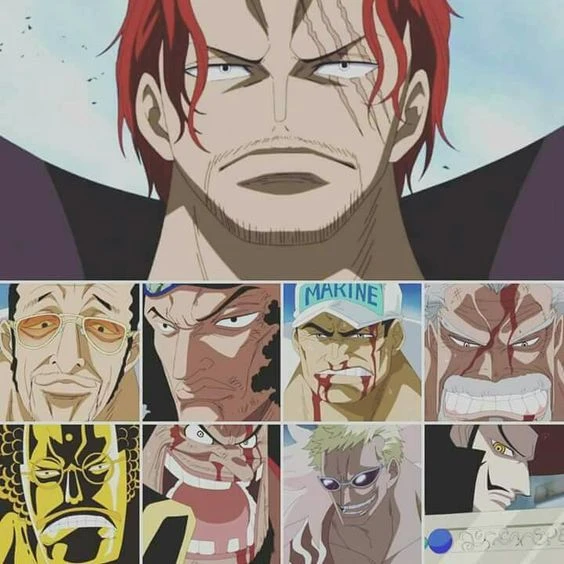
Shanks is known for his sense of honor, willingness to follow certain codes of conduct even as a pirate, and efforts to maintain balance and order in the pirate world. Sengoku, a loyal defender of justice within the Marines, can recognize these characteristics, even if they are expressed in unconventional ways.
Their mutual respect may have arisen from previous shared experiences or interactions, though specific details about their history together are short. Nonetheless, their ability to maintain mutual respect and understanding despite their opposing roles in the world demonstrates the complexities of their relationship.
Sengoku also has a long history with Shiki the Golden Lion, a notorious pirate who once threatened global stability. Shiki, like Shanks, is one of the few pirates Sengoku may have met directly in the past, most likely during his time as a Marine Admiral or earlier in his career.
The specifics of their interactions and the nature of their relationship are mostly unknown, but it is clear that Shiki’s actions had a lasting impact on Sengoku. It’s unclear whether their shared history influences Sengoku’s approach to dealing with other pirates or shapes his views on justice and morality, but it undoubtedly adds depth to his character and role in the larger One Piece narrative.
In conclusion, Sengoku’s respect for Shanks highlights the delicate relationships that exist within the world of One Piece, go beyond traditional allegiance and enmity. Meanwhile, his relationship with Shiki hints at the complexities of his past experiences and the difficulties he has faced throughout his career as a Marine.
c. Close relationship with Monkey D. Garp despite frustrations
Sengoku the Buddha has a long and illustrious history with Monkey D. Garp, another legendary figure in the Marines and grandfather of the infamous pirate Monkey D. Luffy. Despite occasional frustrations and disagreements, their relationship is marked by a strong bond formed over years of friendship, shared experiences, and mutual respect.

Sengoku and Garp both rose through the ranks of the Marine Corps, starting their careers around the same time and working together on a variety of missions and operations. Their shared commitment to justice, as well as their unwavering dedication to upholding Marine ideals, solidified their bond and established them as formidable allies within the organization.
Despite their close relationship, Sengoku has had moments of frustration with Garp, particularly about his grandson, Monkey D. Luffy. Garp’s unconventional parenting style, as well as his refusal to apprehend or condemn Luffy for his pirate actions, have undoubtedly strained their relationship.
Sengoku, as a loyal supporter of justice and the rule of law, may have found Garp’s leniency toward Luffy difficult to reconcile with his own values and principles. Nonetheless, his admiration for Garp’s strength, integrity, and unwavering commitment to his convictions has endured, even in the face of disagreements or frustrations.
Their relationship exemplifies the complexities of loyalty, duty, and personal integrity in the world of One Piece. Despite their occasional differences of opinion or approaches to justice, Sengoku and Garp remain steadfast allies and trusted comrades, bound together by their shared commitment to Marine ideals and unwavering dedication to maintaining global justice and order.
In summary, Sengoku’s close relationship with Monkey D. Garp exemplifies the Marines’ camaraderie and mutual respect, despite occasional frustrations or disagreements. Their enduring friendship and shared commitment to justice highlight the complexities of loyalty and duty in the world of One Piece.
d. Appreciates the potential of former allies such as Kuzan and Issho
Despite his retirement from the position of Fleet Admiral, Sengoku the Buddha still recognizes the capabilities and potential of his former Marine allies. Two notable figures among them are former Admiral Kuzan, also known as Aokiji, and newly promoted Admiral Issho, also known as Fujitora.
Kuzan, a veteran Marine known for his laid-back demeanor and formidable ice-based Devil Fruit abilities, served as one of Sengoku’s three Admirals before resigning after the Paramount War. Despite philosophical differences and occasional clashes of approaches, Sengoku recognizes Kuzan’s strength, experience, and strategic acumen.
Similarly, Sengoku respects Admiral Issho, who rose to prominence following the Dressrosa Arc. Issho’s dedication to justice and efforts to reform the Marine Corps from within has captured Sengoku’s attention and gratitude. Despite their limited interactions, Sengoku recognizes Issho’s ability to effect positive change within the organization and his contributions to maintaining global order and stability.
Sengoku’s appreciation for former allies such as Kuzan and Issho demonstrates his understanding of the complexities of leadership and the importance of surrounding oneself with capable and principled people. While their approaches to justice and methods differ, Sengoku values their contributions to the Marine cause and admires their dedication to maintaining global justice and order.
In conclusion, Sengoku’s appreciation for former allies like Kuzan and Issho demonstrates his understanding of the value of surrounding oneself with capable and principled people. Despite their philosophical differences and occasional clashes in approach, Sengoku recognizes their strengths and contributions to the Marine cause, emphasizing the complexities of leadership and camaraderie in One Piece.
Sengoku Early Life and Career
a. Originated from the South Blue
Sengoku the Buddha, despite his formidable reputation as a Marine leader, had humble beginnings in the South Blue. The specifics of his upbringing remain unknown, but his roots in this particular sea served as a foundational aspect of his personality. The South Blue, known for its diverse cultures and frequently regarded as one of the least explored seas, most likely shaped Sengoku’s worldview and instilled in him a sense of curiosity and adventure at a young age.
Growing up in the South Blue may have exposed Sengoku to the various challenges and adversities that come with life in the Blue Seas, which contributed to his resilience and determination. It’s possible that his experiences in this region influenced his decision to join the Marines, perhaps motivated by a desire to bring peace and justice to his home country and beyond.
The South Blue’s reputation for producing individuals with strong convictions and unwavering determination may have influenced Sengoku’s character, putting him on track for a career in the Marines. His upbringing in this area paved the way for his eventual rise to prominence within the organization, as he embarked on a journey that would see him become one of the most respected figures in Marine history.
b. Joined the Marines at the age of 23, along with Monkey D. Garp and Tsuru
Sengoku enlisted in the Marines at the age of 23, leading in his illustrious career in the service of justice and order. This important decision not only reflected his personal values, but also connected him with like-minded people who would become lifelong comrades and allies.

In addition to Sengoku, the legendary Monkey D. Garp and Vice Admiral Tsuru joined the Marines. The bond formed during their early days in the Marines would last throughout their careers, shaping their interactions and influencing their respective paths within the organisation.
Sengoku’s enlistment at such a young age demonstrates his dedication and sense of responsibility. It demonstrates a strong commitment to upholding justice and protecting innocent lives, qualities that would define his time in the Marines.
The camaraderie formed with Garp and Tsuru during their early Marine years paved the way for the trio’s deep mutual respect and understanding. Their common experiences and goals would provide a solid foundation for future collaborations and contributions to the Marine cause.
c. Rose through the ranks, eventually becoming an Admiral before the Great Age of Pirates
Sengoku’s career in the Marines was marked by a steady rise through the ranks, a testament to his exceptional leadership abilities, strategic acumen, and unwavering commitment to justice. From his humble beginnings as a young recruit, he showed a natural aptitude for military command, quickly distinguishing himself from his peers.
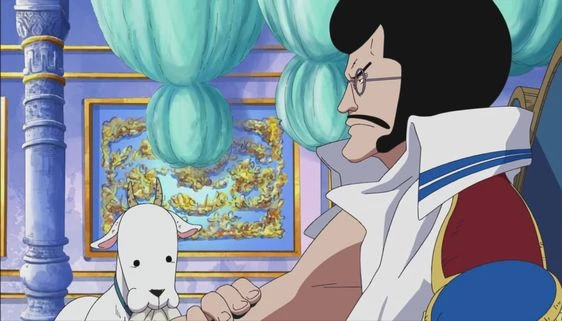
Sengoku steadily rose through the ranks thanks to years of diligent service and unwavering commitment to the Marine ethos. His advancement through the Marines’ hierarchical structure was more than just a reflection of his seniority; it was also a testament to his outstanding performance and leadership skills.
Sengoku eventually rose to the prestigious rank of Admiral, marking the pinnacle of his Marine career. This position gave him significant authority and influence within the organization, allowing him to shape its policies and direction at a critical time in its history.
Sengoku’s role as Admiral was critical in maintaining peace and order in One Piece’s chaotic world. His strategic brilliance and unwavering commitment to justice earned him the respect of both allies and adversaries, cementing his position as one of the most formidable figures in the Marine hierarchy.
Sengoku’s promotion to the rank of Admiral occursimultaneously with the start of the Great Age of Pirates, a period marked by the emergence of numerous powerful pirate crews and the growing threat they posed to global stability. During this volatile period, his leadership would be tested as he navigated the complex challenges posed by the rise of piracy and the ever-changing geopolitical landscape.
Encounters and Relationships
a. Mentored Donquixote Rosinante after meeting him 31 years ago
Sengoku the Buddha’s relationship with Donquixote Rosinante is one of deep mentorship and guidance. Their connection began 31 years ago, when Sengoku met Rosinante, a young boy in need of guidance. As fate would have it, this encounter sparked the formation of a significant bond that would shape both of their lives.
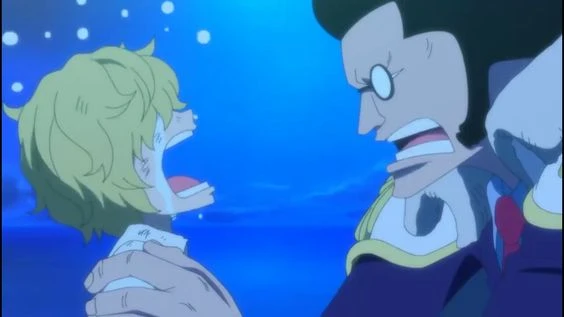
Rosinante, a former member of the notorious Donquixote Pirates, found himself at a crossroads when he met Sengoku. Recognizing Rosinante’s potential despite his affiliations, Sengoku took it upon himself to mentor the young man, guiding him away from piracy and toward a life of righteousness within the Marines.
Rosinante went through a transformation under Sengoku’s tutelage, abandoning his previous allegiance to the Donquixote Pirates in favor of the Marines’ principles of justice. Sengoku’s wisdom and guidance instilled in Rosinante a sense of duty and honor, transforming him into a formidable force for good within the Marine Corps.
Their mentor-pupil relationship not only represents the transformative power of mentorship, but it also demonstrates Sengoku’s compassion and faith in redemption. Sengoku exemplifies the Marine ethos of seeking justice while also offering guidance to those who are willing to accept it through his mentorship of Rosinante.
b. Participated in the confrontation with Shiki the Golden Lion
Another pivotal moment in Sengoku the Buddha’s illustrious career was his confrontation with Shiki the Golden Lion, a notorious and formidable adversary in the world of piracy. This confrontation was a watershed moment in Marine history, demonstrating Sengoku’s leadership and strategic prowess against a formidable foe.

Shiki, a fearsome pirate known for his immense power and ambition, posed a serious threat to the stability of the seas. Recognizing the need to eliminate this threat, Sengoku rallied the Marines to confront Shiki head on, demonstrating his unwavering commitment to maintaining order and justice.
The clash between Sengoku and Shiki was more than just a battle of brute strength; it was also a demonstration of Sengoku’s strategic acumen and tactical brilliance. Despite Shiki’s formidable abilities and army of loyal followers, Sengoku led the Marines with resolve and determination, devising a strategy to neutralize the threat posed by the Golden Lion.
Sengoku won the confrontation with Shiki thanks to his leadership and courage in the face of adversity, dealing a significant blow to piracy and maintaining the Marines’ authority on the high seas. This encounter cemented Sengoku’s status as a legendary figure in the Marine ranks, earning him respect and admiration from both allies and adversaries.
c. Ordered the Buster Call on Ohara, leading to the pursuit of Nico Robin
One of Sengoku the Buddha’s most controversial decisions was his order to carry out the atrocious Buster Call on the island of Ohara. This fateful command would have far-reaching consequences, triggering a chain of events that would shape history and haunt Sengoku for years to come.
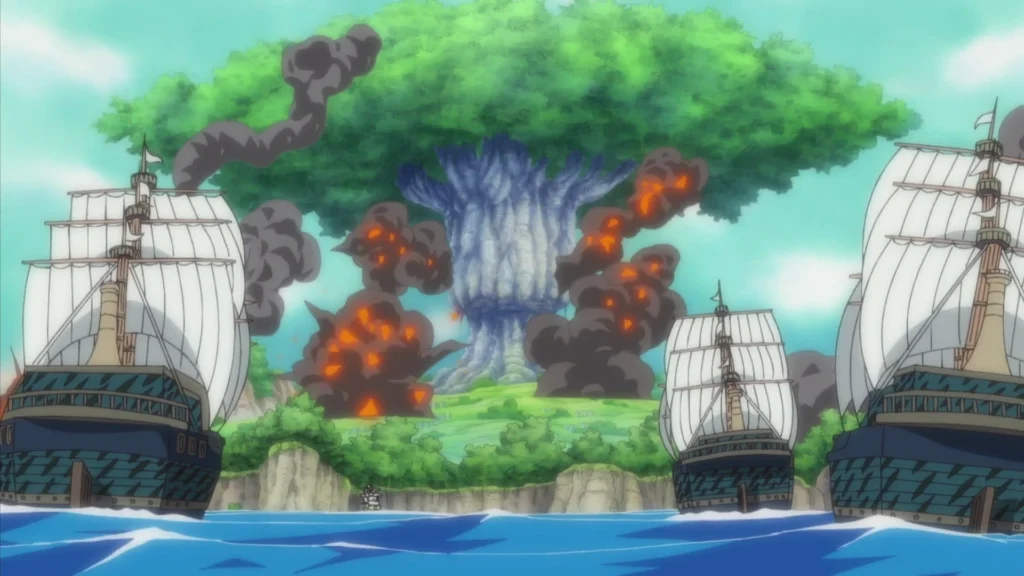
Ohara, known for its esteemed scholars and pursuit of knowledge, became a target of the World Government’s anger as a result of its prohibited research into the Void Century. Fearing the spread of dangerous secrets, Sengoku issued the devastating Buster Call, unleashing the full force of the Marines on the island.
Sengoku’s decision to order the Buster Call was not taken lightly, as he grappled with the weight of his responsibility to uphold justice and maintain global stability. Despite his reservations, he believed that eradicating Ohara was necessary to prevent the spread of forbidden knowledge, which could threaten the delicate balance of power.
However, Sengoku’s actions had far-reaching and tragic consequences. The destruction of Ohara claimed the lives of countless innocent people, including children and civilians who had no involvement in the island’s illegal research. This harrowing outcome would weigh heavily on Sengoku’s conscience, calling into question the morality of his actions and the true nature of justice.
Furthermore, Sengoku’s order to carry out the Buster Call would pave the way for the pursuit of Nico Robin, a survivor of the Ohara massacre and key figure in uncovering the mysteries of the Void Century. The Marines’ pursuit of Robin would become a recurring challenge as they attempted to apprehend her and prevent her from revealing the secrets she possessed.
Sengoku’s order for the Buster Call on Ohara exemplified the ruthless pragmatism of a Marine leader determined to maintain the status quo at all costs. However, the consequences of his decision would serve as a stark reminder of the moral complexities inherent in the pursuit of justice, leaving an imprint on his legacy.
d. Assigned Rosinante to spy on the Donquixote Pirates
Sengoku recognized Donquixote Rosinante’s unique position to provide valuable intelligence on his former crew, the Donquixote Pirates, after he changeover from piracy to Marine service. Sengoku strategically assigned Rosinante the covert mission of spying on the Donquixote Pirates, taking advantage of his insider knowledge and understanding of the pirate crew’s inner workings.

This assignment demonstrated Sengoku’s astute tactical thinking and willingness to use all available resources in pursuit of justice. Sengoku hoped that by deploying Rosinante as a spy among the Donquixote Pirates, he would be able to gather critical intelligence on their activities, allowing the Marines to foil their evil plans and prosecute them.
Rosinante’s infiltration of the Donquixote Pirates proved to be a difficult and dangerous mission, requiring him to navigate the perilous waters of pirate politics while concealing his true allegiance to the Marines. However, with Sengoku’s guidance and mentorship, Rosinante proved to be a capable and resourceful agent, providing invaluable insights that aided the Marines in their efforts to combat piracy and maintain maritime order.
Sengoku’s decision to assign Rosinante to spy on the Donquixote Pirates demonstrates his willingness to use unconventional methods to achieve his goals, even if it means putting people in morally ambiguous situations. Though fraught with danger and moral quandaries, Sengoku believed that the pursuit of justice sometimes required difficult decisions and sacrifices.
Sengoku demonstrated his faith in Rosinante’s abilities by entrusting him with this critical mission, as well as his willingness to empower those under his command to take on difficult tasks for the greater good. However, the consequences of this assignment would ultimately put mentor and pupil bonds of loyalty and trust to the test, shaping their futures in unexpected ways.
e. Took in X Drake, seeing him as a son
Another interesting aspect of Sengoku the Buddha’s character is his paternal relationship with X Drake, a former pirate who later joined the Marine Corps. Despite Drake’s unstable history as a member of the pirate crew, Sengoku saw potential in him and took him under his wing, treating him not only as a subordinate but also as his son.
Drake’s transition from piracy to the Marine Corps was undoubtedly difficult, filled with trials and hardships. Nonetheless, under Sengoku’s mentorship and guidance, Drake discovered a sense of belonging and purpose within the Marine ranks, eventually earning the trust and respect of his comrades.
Sengoku’s decision to take in Drake and nurture his talents demonstrates his compassion and faith in the power of redemption. Despite Drake’s checkered past, Sengoku recognized his innate potential for greatness and sought to channel it toward the cause of justice and upholding Marine ideals.
Their paternal relationship went beyond the typical boundaries of commander and subordinate, as Sengoku guided, supported, and encouraged Drake on his path to redemption. Sengoku’s actions exemplified the morality of forgiveness and second chances, demonstrating that even those with difficult backgrounds can find redemption and make meaningful contributions to society.
The bond between Sengoku and Drake exemplifies the transformative power of mentorship and individuals’ ability to overcome their pasts and forge a brighter future. As father and son, they faced the challenges of Marine life together, striving for justice and righteousness.
Sengoku’s Involvement in Major Events
a. Played a role in discussions about Crocodile’s replacement as a Warlord
During the unstable times following Crocodile’s dismissal as one of the Seven Warlords of the Sea, Sengoku the Buddha was a key figure in the discussions about his replacement. Sengoku, the former Fleet Admiral of the Marines, wielded considerable power in high-level Marine affairs and strategic decisions. His extensive experience and keen understanding of the delicate balance of power between pirates and marines made him an important figure in the selection process.
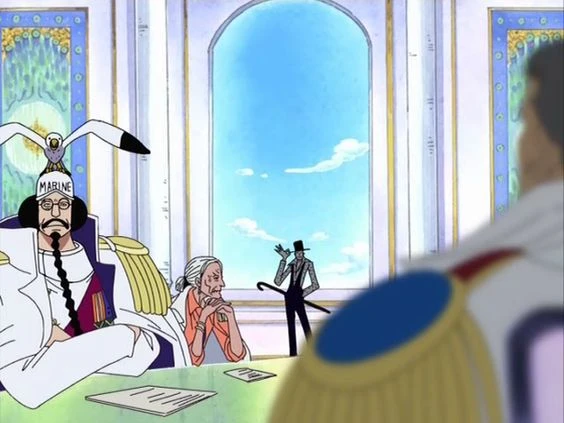
Sengoku’s involvement ensured that the appointment of a new Warlord was taken seriously. He emphasized the importance of selecting a candidate who not only possesses formidable strength but also shares the interests of the World Government and the Marines. His cautious approach sought to avoid further destabilization of the already volatile seas, recognizing the potential consequences of quickly filling Crocodile’s vacancy with an unsuitable candidate.
Sengoku, a seasoned tactician and loyal advocate for justice, expertly navigated the complex political landscape surrounding the Warlord system. His measured guidance during these discussions demonstrated his dedication to maintaining order and upholding the principles of justice in the unstable world of piracy.
b. Learned about garp grandson Luffy’s identity during the Enies Lobby incident
The Enies Lobby incident was a watershed moment in Sengoku the Buddha’s understanding of the intricate web of relationships that exists within the world of piracy. During this tumultuous confrontation, Sengoku learned the true identity of Monkey D. Luffy, that he is garp grandson and the Straw Hat Pirates’ leader.

Sengoku was initially unaware of the familial connection between garp and luffy, so his realization came as a shock, adding a deeply personal dimension to the already high-stakes conflict at Enies Lobby. As a high-ranking Marine officer tasked with maintaining order and pursuing justice, Sengoku was torn between his duty to the World Government and his friend garp ties to Luffy.
Despite his deep devotion to the Marine cause, Sengoku’s discovery forced him to confront the complexities of morality and loyalty in the face of familial obligations. While he maintained his allegiance to the Marines, Sengoku’s interactions with Luffy during the Enies Lobby incident hinted at a subtle internal conflict as he wrestled with conflicting loyalties pulling at his conscience.
Sengoku’s recognition of Luffy’s identity highlighted the complexities of his personality, revealing a depth of emotion and internal conflict beneath his stoic exterior. His reaction to this revelation would influence his subsequent interactions with Luffy and the Straw Hat Pirates, casting doubt on their future encounters.
c. Reacted to news regarding Gecko Moria’s defeat, Luffy’s actions, and the Blackbeard Pirates
The defeat of Gecko Moria and the rise of Luffy as a formidable force in the pirate world shook the Marine hierarchy, prompting a response from Sengoku the Buddha. As a seasoned Marine, Sengoku kept a close eye on developments in the pirate community, recognizing the importance of each event in shaping the balance of power.
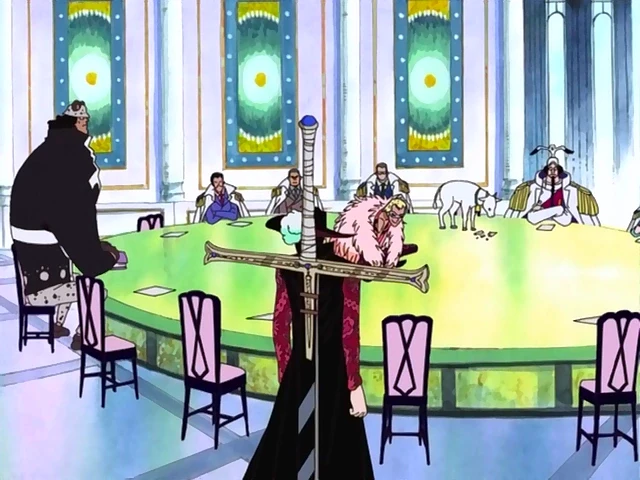
Gecko Moria’s defeat at the hands of Luffy and his crew marked a significant shift in the dynamics of piracy, signaling the rise of a new generation of pirates who challenged the established order. Sengoku’s reaction to this development was a mix of concern and vigilance, as he considered the potential consequences for sea stability and the authority of the World Government.
In addition to Moria’s defeat, Sengoku had to deal with the growing power of the Blackbeard Pirates, led by the ambitious and ruthless Marshall D. Teach. The emergence of Blackbeard as a major player in the pirate world posed a direct threat to the Marines’ efforts to maintain order, forcing Sengoku to reconsider his strategic priorities and reallocate resources accordingly.
Amidst these shifting tides, Sengoku’s leadership was put to the test as he navigated the Great Age of Pirates’ complex political landscape. His measured response to these developments reflected his unwavering commitment to upholding justice and maintaining global stability, even in the face of unprecedented challenges posed by Luffy and Blackbeard.
d. Led during the Marineford War, overseeing Ace’s execution and facing off against Luffy and Whitebeard
One of Sengoku the Buddha’s most memorable moments as Fleet Admiral was his leadership during the tumultuous Marineford War. Sengoku, as the central figure overseeing Portgas D. Ace’s execution, found himself in the midst of an unprecedented scale and intensity of conflict.
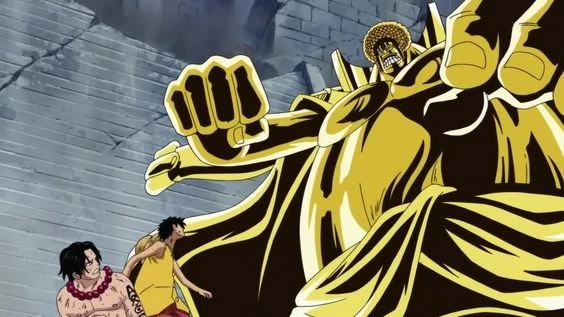
Sengoku, tasked with maintaining order amidst the chaos of battle, demonstrated unwavering resolve and strategic acumen as he directed the Marines’ efforts to put down the uprising led by the fearsome Whitebeard Pirates. His faithful leadership served as a beacon of stability amidst the chaos of war, instilling confidence in his subordinates and rallying them to face the looming threat.
Despite his commanding presence and formidable abilities, Sengoku faced formidable opponents in the form of Monkey D. Luffy and the legendary Whitebeard himself. Sengoku faced these formidable foes in a climactic battle that tested his mettle as a warrior and leader, determined to uphold justice and protect the World Government’s interests.
The Marineford War was a crucible of fire for Sengoku, demonstrating his resilience and determination in the face of overwhelming odds. His actions at this watershed moment in history would leave an indelible mark on the records of Marine history, cementing his legacy as a loyal defender of justice and order in a world fraught with chaos and uncertainty.
Post-War and Retirement
After the tumultuous events of the Summit War of Marineford, Sengoku the Buddha found himself dealing with the aftermath, both in terms of the physical toll on the Marines and the emotional weight of the conflict’s decisions.
a. Dealt with the aftermath of the war and Magellan’s condition
Following the intense battle at Marineford, Sengoku faced the daunting task of dealing with the war’s aftermath. The loss of numerous Marines, as well as the damage to Marine headquarters, necessitated immediate attention and careful recovery planning. Sengoku also had to deal with the condition of Magellan, the Chief Warden of Impel Down, who was severely injured during the chaos of the war.

Despite the difficulties, Sengoku handled the situation with characteristic tenacity and leadership. He coordinated relief efforts for injured Marines and civilians, ensuring that medical attention and resources were directed where they were most needed. Sengoku oversaw Magellan’s treatment and recovery, recognizing the importance of restoring stability in Impel Down and the prison system under Marine control.
Throughout this time, Sengoku’s unwavering dedication to duty and concern for his subordinates’ well-being were clear. He navigated the complexities of postwar reconstruction with a stable hand, focusing on the Marines’ well-being and maintaining organizational order.
b. Requested resignation as Fleet Admiral, suggesting Aokiji as his successor
As the dust settled from the war, Sengoku made an important decision about his own role in the Marines. Recognizing the need for new leadership and a new direction for the organization, he decided to step down as Fleet Admiral. This decision, while unexpected by many, reflected Sengoku’s humility and commitment to the Marines’ best interests.
Sengoku nominated Admiral Aokiji as his successor, demonstrating his strategic foresight. Aokiji, known for his cool demeanor and formidable abilities, was a respected figure in the Marine Corps, having proven himself in numerous conflicts. Sengoku’s recommendation of Aokiji demonstrated his trust in the admiral’s leadership abilities and belief that Aokiji was the best candidate to lead the Marines into the future.
Sengoku’s decision to step down as Fleet Admiral was a watershed moment in his career, demonstrating his dedication to ensuring the Marine Corps’ continued strength and integrity. By stepping down and approving a capable successor, he ensured a smooth transition of power and signaled his readiness to embark on a new chapter in his life.
c. Involved in discussions after Doflamingo’s defeat, showing support for Law and Fujitora
Sengoku played an important role in subsequent Marine discussions following the downfall of Warlord Donquixote Doflamingo and the revelation of his criminal activities. Recognizing the complexities of the situation and the need for decisive action, he expressed his support for the actions of Trafalgar D. Water Law, the pirate responsible for Doflamingo’s defeat, and Admiral Fujitora, who had played an important role in exposing Doflamingo’s wrongdoing.
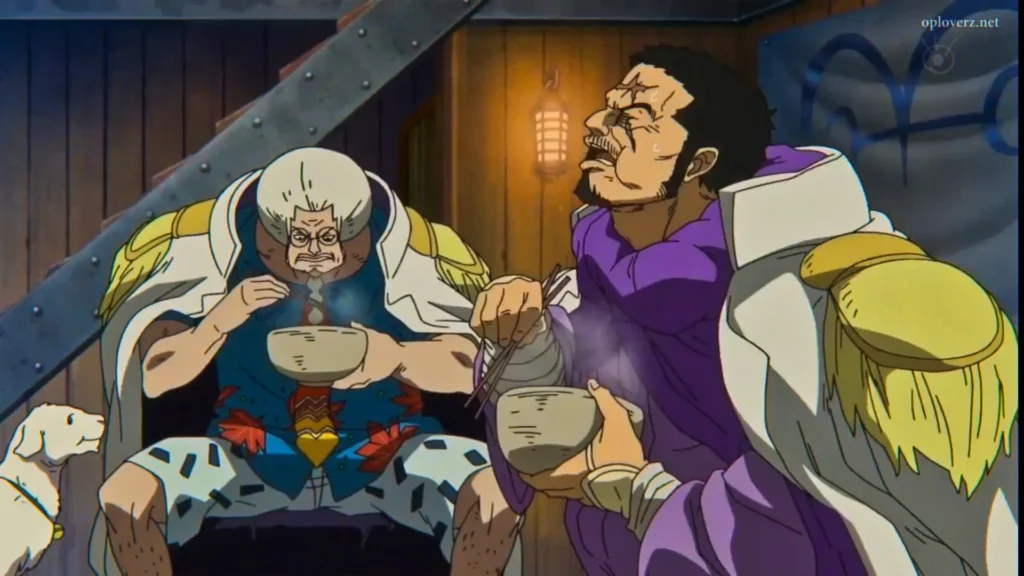
Sengoku’s support for Law and Fujitora’s actions demonstrated his commitment to justice and willingness to recognize the contributions of individuals, regardless of alliance. By publicly expressing his support, he helped legitimize the actions taken against Doflamingo and reaffirmed the Marine Corps’ stance against corruption and criminality.
Furthermore, Sengoku’s participation in the discussions following Doflamingo’s defeat demonstrated his continued influence within the Marine hierarchy, despite stepping down as Fleet Admiral. His perspective carried weight among his peers, demonstrating the respect and admiration he had earned throughout his illustrious career.
d. Confronted issues of Marine security, including attacks by Jack and internal threats from assassins
During his tenure as Inspector General of the Marines, Sengoku faced a number of security and integrity issues. One such challenge arose from external threats, specifically the actions of Jack, one of the notorious Calamities serving under the Yonko Kaido. Jack’s relentless assaults on Marine installations and territories threatened the World Government’s stability and necessitated a coordinated response from Sengoku and his subordinates.
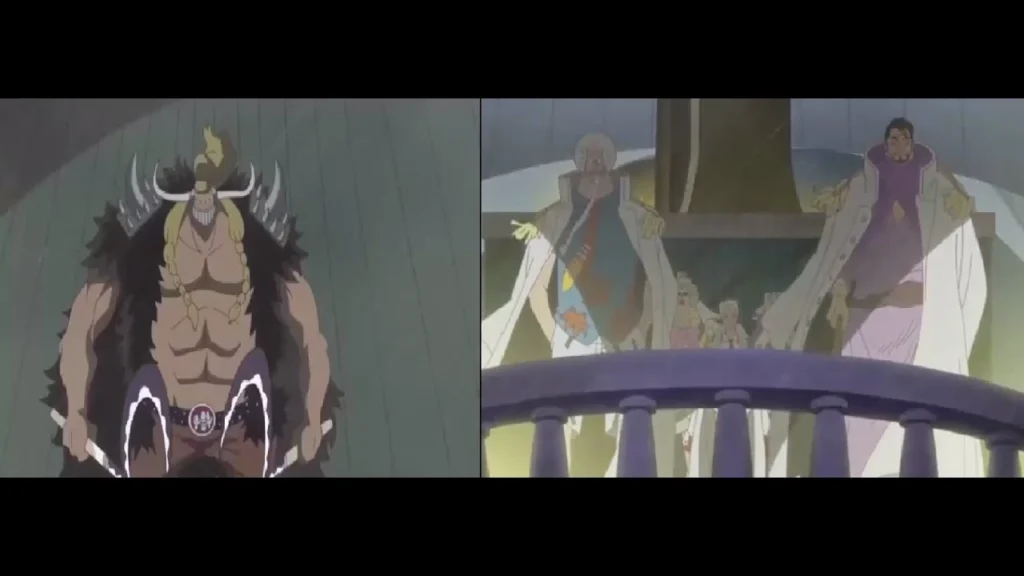
Sengoku also had to deal with internal threats to Marine security, such as assassination plots and rogue elements attempting to undermine the organization from within. As Inspector General, he took proactive steps to identify and neutralize these threats, deploying Marine forces and intelligence-gathering assets to eliminate any potential sources of instability.
Sengoku’s approach to addressing these security challenges was marked by a combination of pragmatism and unwavering commitment to justice. He prioritized civilian and marine safety, employing strategic tactics and utilizing the entire Marine organization’s resources to counter threats from both internal and external sources.
Sengoku’s leadership and decisive action demonstrated his unwavering commitment to maintaining global peace and order, even in the face of formidable adversaries and complex challenges.
Conclusion
Sengoku the Buddha emerges as a complex figure within the world of One Piece, balancing his formidable power as a former Fleet Admiral with a nuanced personality marked by both sternness and compassion. Throughout his career, he navigated complex relationships with allies and adversaries alike, demonstrating unwavering dedication to justice while grappling with the moral ambiguities of his role in the Marines.
His involvement in major events such as the Summit War of Marineford showcased his leadership prowess and strategic acumen, yet his resignation following the war underscored his disillusionment with the World Government’s actions. Despite his retirement, Sengoku remains a central figure in the ongoing saga, grappling with the aftermath of past conflicts and navigating new threats to Marine security. His legacy endures as a testament to the complexities of power, morality, and duty in the ever-evolving world of One Piece.
FAQs
Q1. What is Sengoku the Buddha’s role within the Marines and how does it change over time?
A. Sengoku initially serves as the Fleet Admiral of the Marines, holding absolute power over the organization. However, after the Summit War of Marineford, he retires from his leadership position but remains in the Marines as an Inspector General, focusing on oversight and security matters.
Q2. Can you elaborate on Sengoku’s relationships with prominent characters such as Monkey D. Garp, Donquixote Rosinante, and X Drake?
A. Sengoku has a lifelong colleague relationship with Monkey D. Garp, whom he respects despite occasional frustrations, particularly regarding Garp’s grandson, Monkey D. Luffy. He mentored Donquixote Rosinante and raised him like a son, and he also took in X Drake, seeing potential in him.
Q3. What are Sengoku’s abilities and powers as a former Fleet Admiral of the Marines? How do they contribute to his role within the organization?
A. Sengoku possesses immense physical strength and hand-to-hand combat skills. He also consumed the Hito Hito no Mi, Model: Daibutsu, allowing him to transform into a giant golden Buddha. Additionally, he is proficient in all three types of Haki, making him a formidable force within the Marines.
Q4. What significant events did Sengoku participate in, and how did they shape his perspective on justice and his loyalty to the World Government?
A. Sengoku played a major role in the Summit War of Marineford, overseeing Ace’s execution and confronting key figures like Luffy and Whitebeard. However, he became frustrated with the World Government’s cover-ups and eventually resigned from his position as Fleet Admiral, losing faith in the government’s actions.
Q5. Who are Sengoku’s notable allies and enemies within the One Piece universe, and what are the reasons behind these relationships?
A. Sengoku is respected by figures like Whitebeard and Shanks but harbors animosity towards Blackbeard and Monkey D. Luffy. He has a close relationship with Monkey D. Garp despite frustrations and respects individuals like Shanks, Kuzan, and Issho for their potential and abilities.
Q6. Could you provide more information about Sengoku’s early life and career, including his origins, entry into the Marines, and rise through the ranks?
A. Sengoku originated from the South Blue and joined the Marines at the age of 23, alongside Monkey D. Garp and Tsuru. He steadily rose through the ranks, eventually becoming an Admiral before the Great Age of Pirates, indicating a long and distinguished career within the organization.
